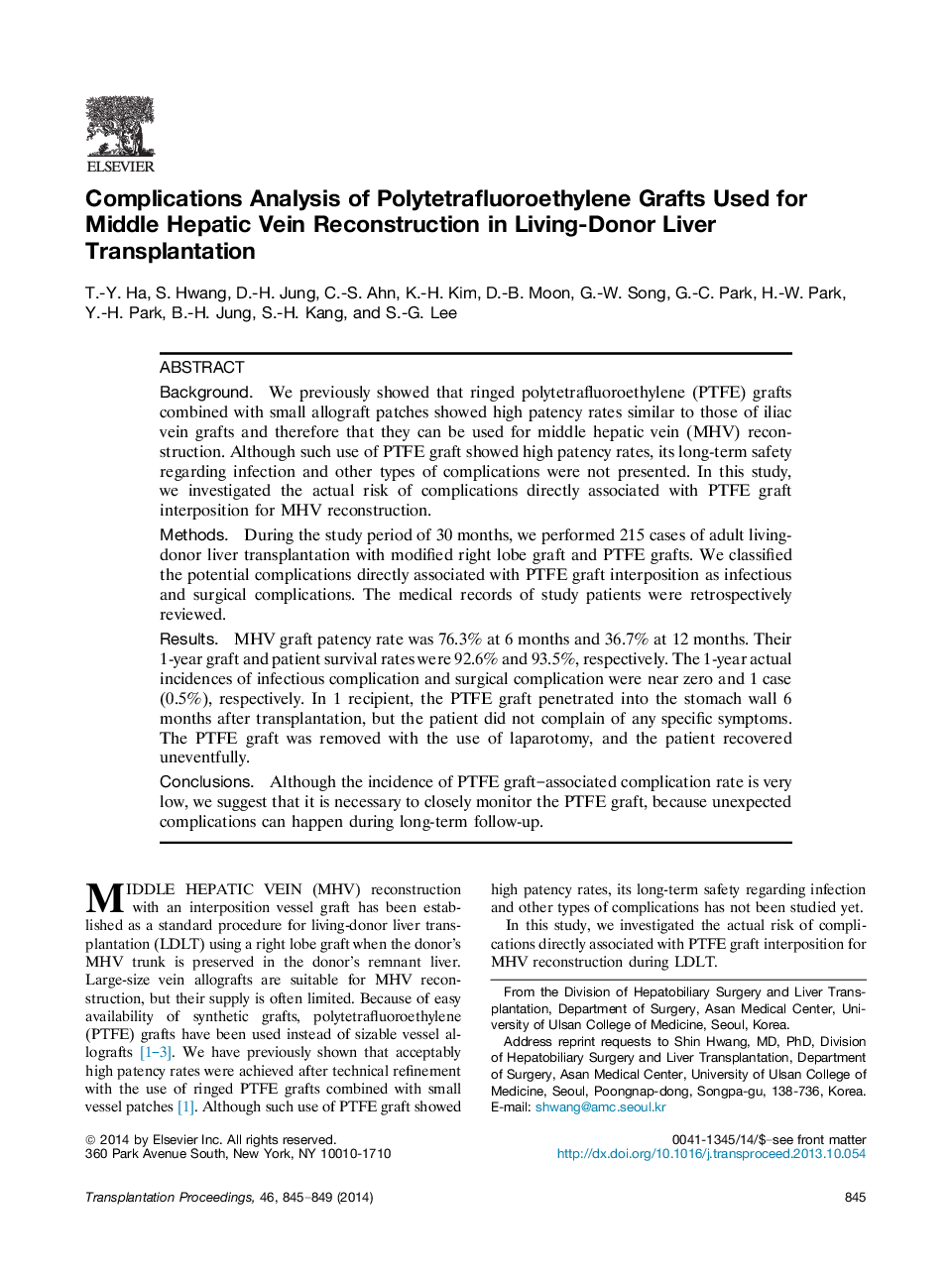| Article ID | Journal | Published Year | Pages | File Type |
|---|---|---|---|---|
| 4258409 | Transplantation Proceedings | 2014 | 5 Pages |
BackgroundWe previously showed that ringed polytetrafluoroethylene (PTFE) grafts combined with small allograft patches showed high patency rates similar to those of iliac vein grafts and therefore that they can be used for middle hepatic vein (MHV) reconstruction. Although such use of PTFE graft showed high patency rates, its long-term safety regarding infection and other types of complications were not presented. In this study, we investigated the actual risk of complications directly associated with PTFE graft interposition for MHV reconstruction.MethodsDuring the study period of 30 months, we performed 215 cases of adult living-donor liver transplantation with modified right lobe graft and PTFE grafts. We classified the potential complications directly associated with PTFE graft interposition as infectious and surgical complications. The medical records of study patients were retrospectively reviewed.ResultsMHV graft patency rate was 76.3% at 6 months and 36.7% at 12 months. Their 1-year graft and patient survival rates were 92.6% and 93.5%, respectively. The 1-year actual incidences of infectious complication and surgical complication were near zero and 1 case (0.5%), respectively. In 1 recipient, the PTFE graft penetrated into the stomach wall 6 months after transplantation, but the patient did not complain of any specific symptoms. The PTFE graft was removed with the use of laparotomy, and the patient recovered uneventfully.ConclusionsAlthough the incidence of PTFE graft–associated complication rate is very low, we suggest that it is necessary to closely monitor the PTFE graft, because unexpected complications can happen during long-term follow-up.
